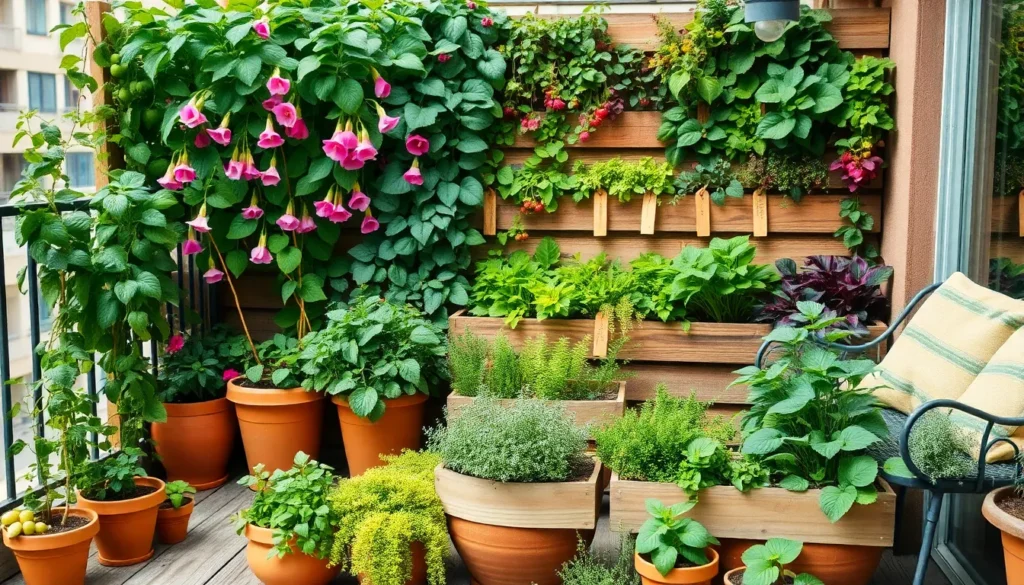Amidst the bustling rhythm of city life, carving out a little sanctuary of green can be both a rewarding challenge and a soulful retreat. Whether you’re new to the gardening scene or a seasoned urban horticulturist, the concept of transforming compact spaces into thriving gardens offers a unique blend of creativity and practicality. The importance of establishing a small urban garden goes beyond aesthetics; it’s about creating a personal oasis that nurtures the spirit and supports a more sustainable lifestyle.
In this guide, we will explore how to maximize limited spaces, from selecting the right containers and soil to choosing plants that flourish in urban environments. You’ll discover techniques to harness natural light and optimize water use, ensuring your garden thrives even in the tightest of quarters. With these actionable insights, you’ll be equipped to cultivate beauty in your urban setting, no matter the size of your space. Together, let’s embark on this delightful journey to transform your urban nook into a lush, lively retreat.
Assess Available Space
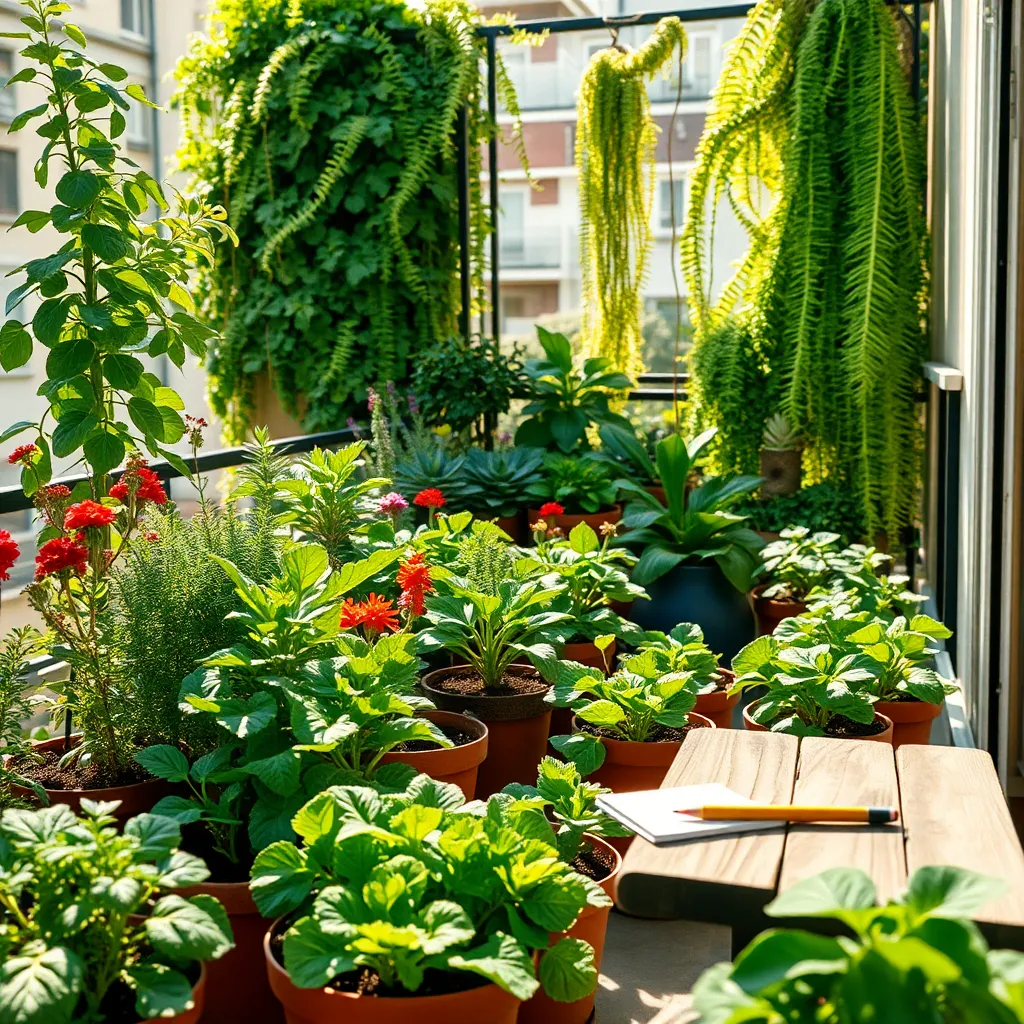
Before diving into plant selection, it’s essential to evaluate the available space in your urban garden. Measure the dimensions of your gardening area, considering both horizontal and vertical possibilities for plant placement.
Look for areas that receive the most sunlight, as this will influence which plants you can grow successfully. South-facing balconies or windowsills usually receive the most light, making them ideal for sun-loving plants like tomatoes and basil.
If your space is limited, think vertically by using wall-mounted planters or hanging baskets. This approach maximizes growing potential without occupying valuable floor space, perfect for trailing plants such as strawberries or ivy.
Consider the weight capacity of your space, especially if you’re planning to use containers on balconies or rooftops. Choose lightweight materials and potting mixes to prevent overloading structures, ensuring safety while keeping your plants healthy.
Select Suitable Containers
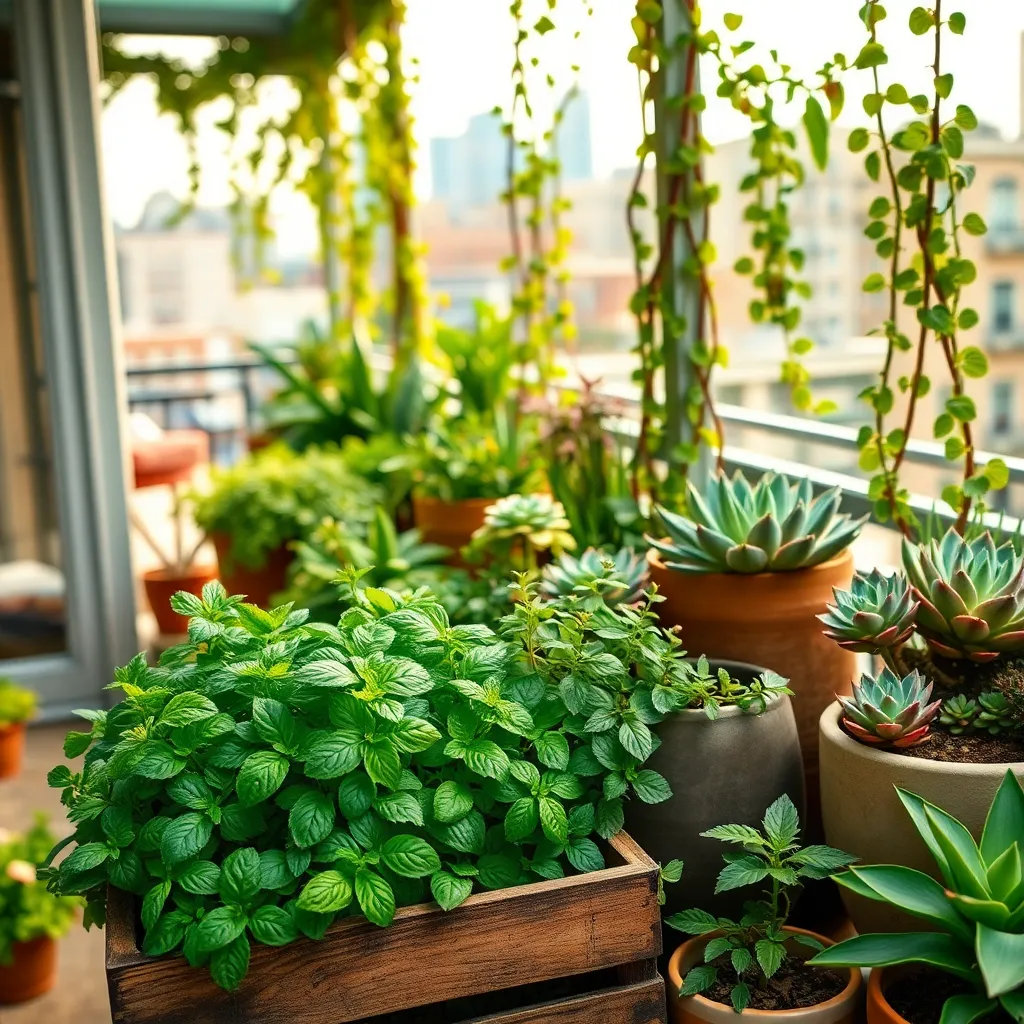
When building a small urban garden, selecting the right containers is crucial for plant health and growth. Consider the size and type of the plant to determine the appropriate container size, ensuring roots have enough space to grow and thrive.
Choose containers with adequate drainage holes to prevent waterlogging, which can lead to root rot. If your chosen container lacks drainage, you can easily add holes using a drill, or line the bottom with a layer of pebbles to improve water flow.
Material choice matters as well; opt for lightweight, durable materials like plastic or fiberglass for easy relocation and longevity. While clay pots are attractive, they tend to dry out quickly, requiring more frequent watering compared to plastic containers.
For a more advanced approach, consider using self-watering containers which ensure consistent moisture levels, perfect for busy urban gardeners. These containers can be especially useful for plants like tomatoes and peppers, which thrive with consistent watering.
Choose Urban-Friendly Plants
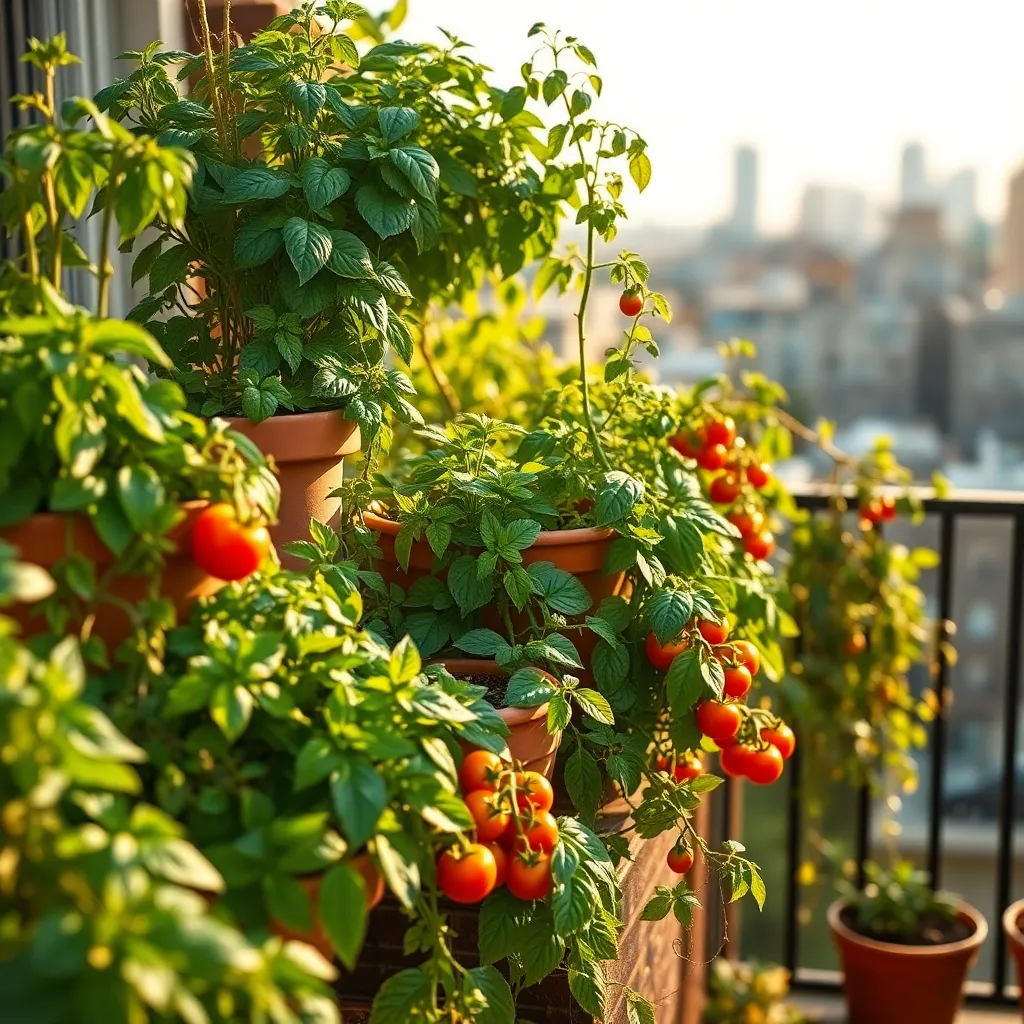
When building a small urban garden, it’s essential to select plants that thrive in limited space and variable conditions. Opt for plants that are compact, resilient, and require minimal maintenance, such as herbs and small vegetables.
Herbs like basil, mint, and cilantro are excellent choices for urban gardens. They not only save space but also thrive in containers, making them easy to manage even in constrained environments.
Consider incorporating small fruiting plants such as cherry tomatoes or strawberries. These plants are both decorative and productive, providing fresh produce right from your urban oasis.
To ensure success with these plants, use a well-draining potting mix that allows for efficient water retention and aeration. Water your plants regularly, but be cautious not to overwater, as urban environments can lead to faster evaporation.
Advanced gardeners might experiment with dwarf varieties of fruit trees like lemon or fig that are specifically bred for container growth. These trees require more attention, including regular pruning and feeding, but they can be incredibly rewarding with the right care.
Prepare Quality Potting Mix
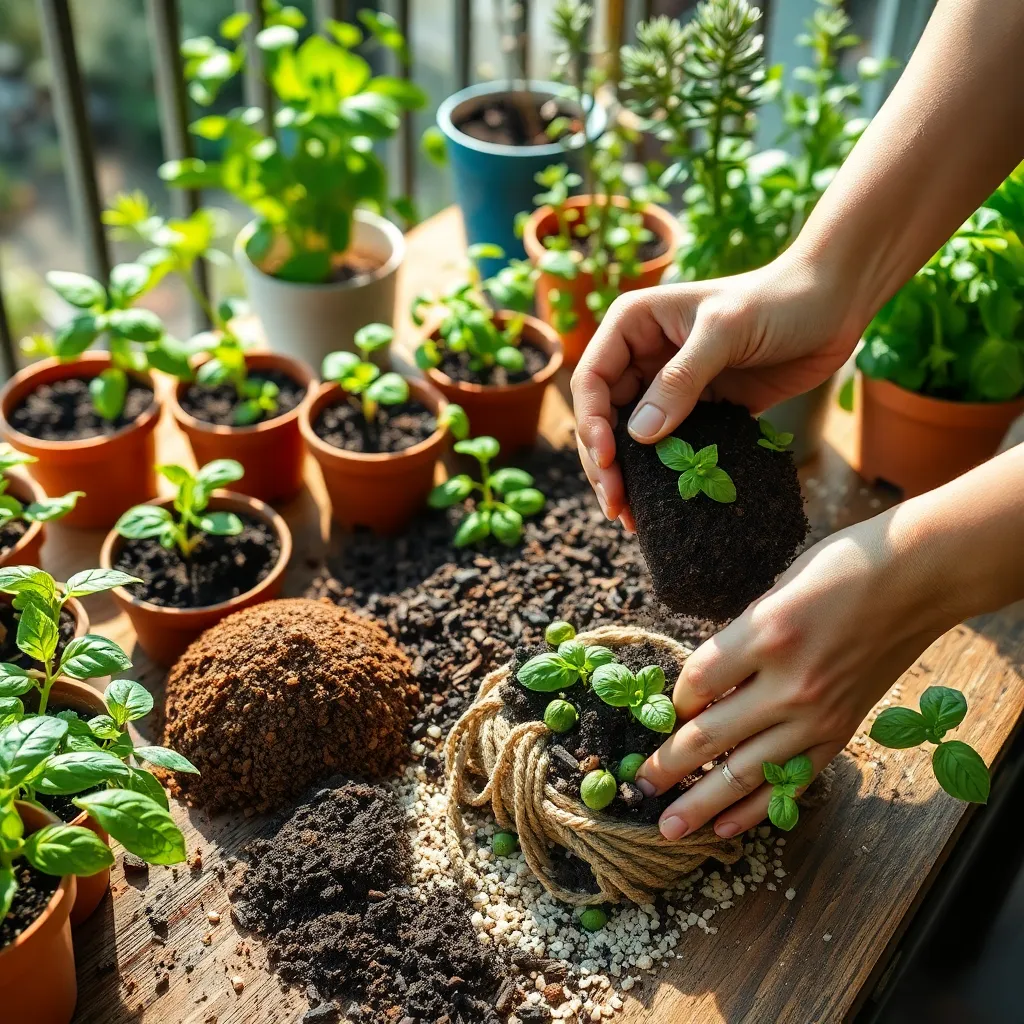
Creating a quality potting mix is crucial for the success of your small urban garden. Start by using a base of high-quality commercial potting soil, which is typically lightweight and well-draining.
Add organic matter such as compost or well-aged manure to enrich the soil with nutrients. This step ensures your plants have access to essential minerals and promotes healthy growth.
Incorporating materials like perlite or vermiculite can improve aeration and drainage. This is particularly important in urban settings where containers might not drain as efficiently as garden beds.
For those looking to enhance moisture retention, mix in some coconut coir or peat moss. These materials help maintain consistent moisture levels, reducing the need for frequent watering.
Implement Efficient Watering System
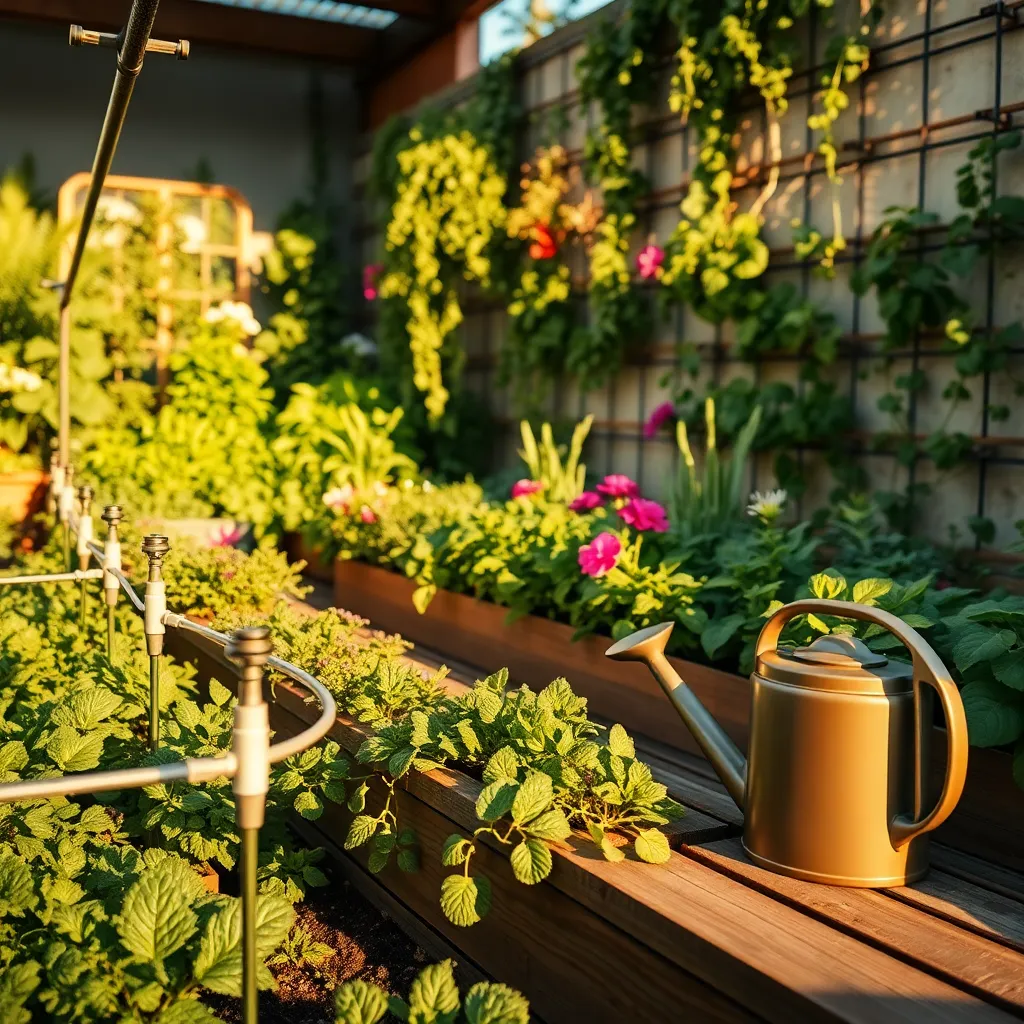
Implementing an efficient watering system is crucial for a thriving urban garden. Begin by assessing your garden’s specific needs, as different plants have varying water requirements.
Consider installing a drip irrigation system, which delivers water directly to the plant roots, minimizing waste. Drip systems are particularly beneficial in small urban spaces where conserving water is often necessary.
For those who prefer a more hands-on approach, a soaker hose can be an excellent alternative. This type of hose allows water to seep slowly into the soil, ensuring deep hydration without unnecessary runoff.
It’s important to water early in the morning or late in the evening to reduce evaporation. This practice not only conserves water but also ensures that your plants are not stressed by midday heat.
Regularly check soil moisture levels by inserting your finger about one inch into the soil. If it feels dry, it’s time to water; if it’s damp, wait a day or two and check again.
For advanced gardeners, consider using a moisture meter to gain accurate readings and adjust your watering schedule accordingly. Such tools can provide insights that help fine-tune your irrigation practices, promoting healthier plant growth.
Incorporate mulch around your plants to retain moisture and reduce the frequency of watering. Organic mulches like shredded leaves or bark not only conserve water but also improve soil quality over time.
Conclusion: Growing Success with These Plants
As we wrap up our journey through building a small urban garden, let’s revisit the five essential relationship concepts we’ve explored. First, we discussed the importance of communication, akin to nurturing soil that fosters growth. Next, we highlighted collaboration, working together as a couple to plan and plant, ensuring a harmonious environment. Third, patience emerged as a vital component, teaching us that relationships, like gardens, flourish over time. Fourth, adaptability reminded us to embrace change, adjusting to new challenges and opportunities. Finally, commitment underscored the dedication required to cultivate both gardens and relationships successfully.
Now, take a moment to discuss with your partner which of these concepts you’d like to focus on first, whether it’s enhancing communication or embracing adaptability. By taking this immediate step, you’re setting the stage for a thriving partnership.
We invite you to save or bookmark this article as a valuable resource on your relationship journey. Remember, with patience and nurturing, your relationship can blossom into something truly beautiful. As you look forward, envision the success and joy that a well-tended relationship can bring. Let’s make every moment count, together.

